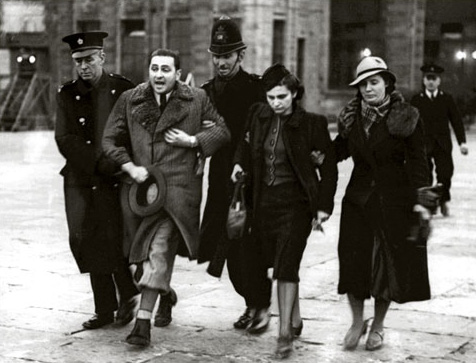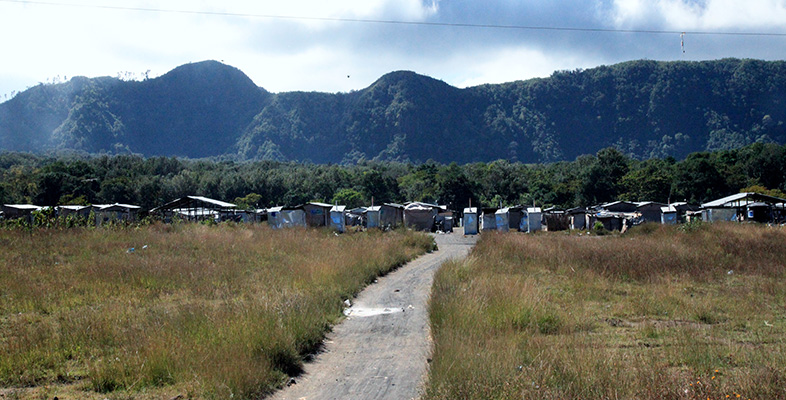4 Refugees, asylum seekers and citizenship
4.1 The context and significance of the historical moments under consideration
The two historical moments we are considering were not chosen arbitrarily; they are both significant times in the overall history of people seeking asylum in the UK. Some important relationships between them give us a starting point for looking at continuities and discontinuities in both policy and experience.
Firstly, Lotte and Wolja were admitted to the UK under the 1905 Aliens Act. This was the first fully implemented legal attempt to control the entry of ‘foreigners’ into the UK. It aimed to keep out all ‘undesirable aliens’, while exempting those seeking asylum or refuge. After the First World War came increasing possibilities for states to control their borders, including the introduction of passports. However, refugees were still seen as unwilling migrants, rather than people seeking a better life in a rich country.
During the late 1980s and 1990s, as issues around ‘asylum seekers’ came to prominence in the public agenda, the dominant historical ‘memory’ was that Jewish refugees were welcomed to the UK in the 1930s as ‘genuine’ refugees and model immigrants, who made no demands upon the welfare system, were willing to ‘assimilate’, and made great contributions to the social and cultural life of the UK. Historical research shows, however, that the reality of their experience was very different. The UK government was very reluctant to admit refugees from Nazism in the 1930s and many were deported (see Figure 3). It did not want permanent settlers in a country considered to be overcrowded and which had mass unemployment. Jewish refugees were admitted temporarily only when the English Jewish community assumed all the costs of receiving and supporting them (London, 2000). We will consider later the implications of this deal for understanding ‘citizenship’.

These two historical moments are connected in a second way. The United Nations (UN), formed out of the aftermath of the Second World War and in the context of the beginning of the Cold War, published the Universal Declaration of Human Rights in 1948 and the Convention Relating to the Status of Refugees in 1951. The Convention developed out of the very specific experiences of the Holocaust and the 60 million people displaced from their homes by the Second World War. The UK was one of the first signatories to the Convention, but no clear procedures were put in place for guaranteeing refugees’ rights. Rather, as Bloch and Schuster (2002, p. 397) argue, ‘refugees and asylum seekers alike were “looked after” … because it was politically expedient to respond humanely to those fleeing, mostly from the Soviet Bloc or its allies. They “deserved” compassion and, by extension, access to welfare because of what they had “endured”’. Indeed, the term ‘asylum seeker’ was first used to refer to political dissidents from the Soviet Union.
Crucially, the Convention created a formal definition of a ‘refugee’, although, until 1967, this applied only to people fleeing from European countries (see Table 1). In the early 1990s, the break-up of the Soviet Union and the increase in political turmoil worldwide resulted in the closing of doors for migrants into Western Europe at a time when the EU was allowing its citizens free movement within member states. Since the rights of refugees were governed by international rather than national laws, ‘asylum’ became the only legal route for entering most Western European countries. Concern about the ‘crises’ of numbers and the costs to the welfare state resulted in moves to tighten up the interpretation of who qualifies as a ‘refugee’. However, it is important to put the European and UK ‘crises’ into context. In 2002, ‘developing countries’ provided asylum to 72 per cent of the world's refugees. Within the EU: ‘The UK received the highest number of asylum applications … but ranked fifth when population size was taken into account’ (Shaw and Durkin, 2003, p. 7). In the early twenty-first century, paradoxically, both those campaigning for the rights of refugees and asylum seekers and those wishing to limit them (including the UK Government) agree that the Convention no longer speaks to the current global situation.
The plethora of legislation and social policy since the early 1990s is widely understood as successive attempts to ‘stem the flow’ of refugees. They include:
-
the development of ever tighter controls on ways of entering the country;
-
the creation of disincentives for people to come to the UK, through restricting their access to welfare;
-
increasingly, in the early twenty-first century, detention and ‘criminalization’ of those seeking asylum or refugee status who are in the UK;
-
deportation of those seeking asylum whose claims are ‘unsuccessful’.
Despite these dominant views in the 1930s and today, a series of tensions and contradictions within government policies can be identified. A continuity of approach can be seen as successive UK governments, both pre- and post-1951 and continuing into the twenty-first century, have wished to be seen to be carrying out their international obligations to refugees, and to maintain the picture of the UK as a ‘safe haven’, which welcomes refugees and recognises their contribution to economic, social and cultural life. The 1951 UN Convention provided a clearer definition of who counts as a refugee. A significant change in the approach took place from the 1990s with a splitting of the category ‘refugee’ into two distinct groups – ‘asylum seekers’ and ‘refugees’ – as a result of the belief that the majority of people seeking asylum were not ‘genuine refugees’ in the terms of the 1951 Convention. Since the early 1990s, therefore, everyone seeking asylum on the basis of their claim to be a refugee, is called an ‘asylum seeker’ within law and social policy. ‘Refugees’ are those whose claims have been recognised; they are entitled to the same social and economic rights as UK citizens. Although not legally citizens, they have full access to medical treatment, education, housing and employment. We can see how the state organises a connection between personal lives and social policy through identification of the categories that link people to welfare, in this instance through the different statuses accorded people within the procedures of the asylum process.
In developing tight controls and regulations, governments have claimed to recognise the fears of many of their citizens about spiralling costs of welfare services and benefits, and the threat to the ‘British way of life’ that asylum seekers are assumed to pose. Indeed, being able to welcome ‘genuine refugees’ is said to be dependent upon controlling and penalising the majority of asylum seekers who are in fact ‘bogus’. In this way, a long-standing tenet of UK policy – that ‘good race relations’ depend upon strong and fair immigration controls – is reinforced (Lewis, 1998).
Counter voices have also helped to shape social policy and personal lives. These have included asylum seekers and refugees themselves, historians of the 1930s and a range of UK community and voluntary organisations. These latter organisations have often been called upon to provide material and psychological support to asylum seekers and refugees. They have been in the forefront of campaigns first to challenge the regulations and legislation, and their administration, and second to ‘nail the myths’ about refugees and asylum seekers presented in much of the media.
